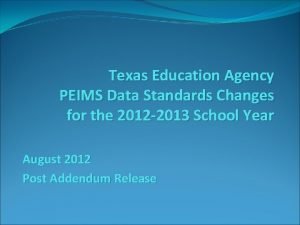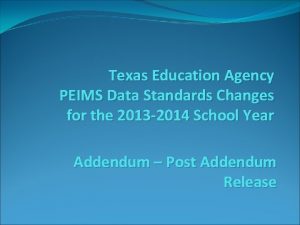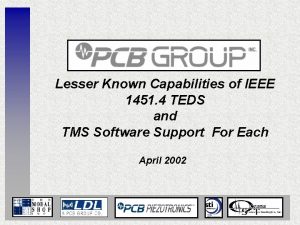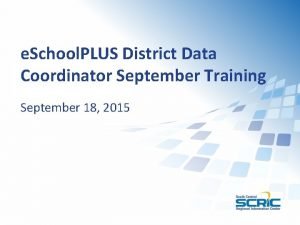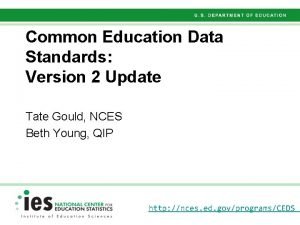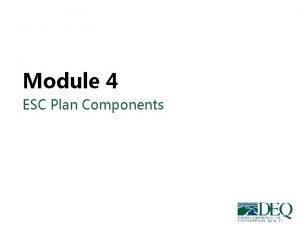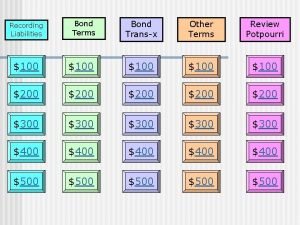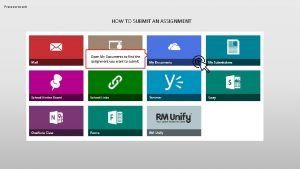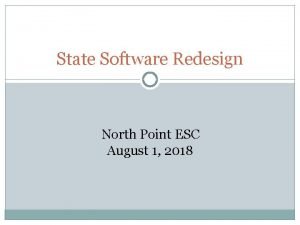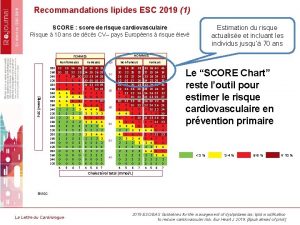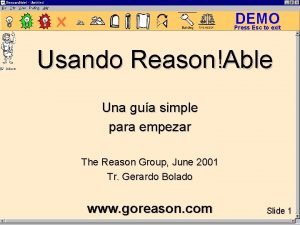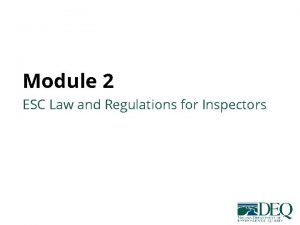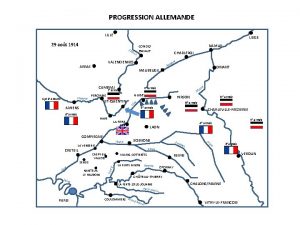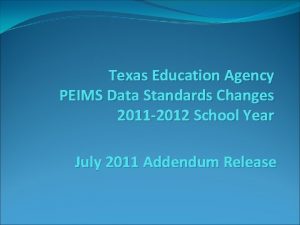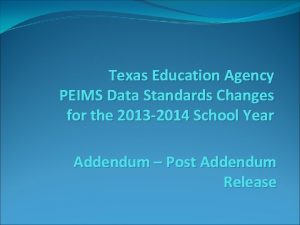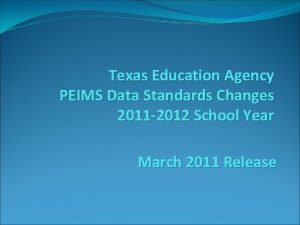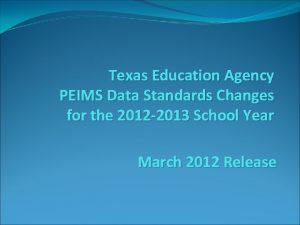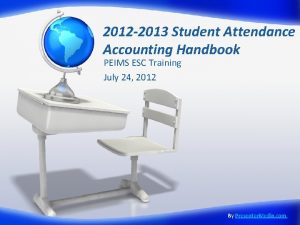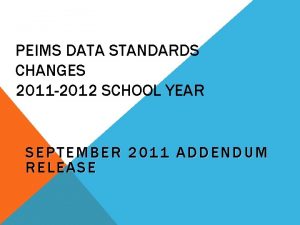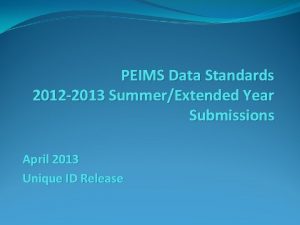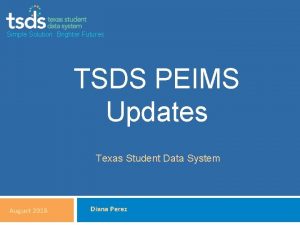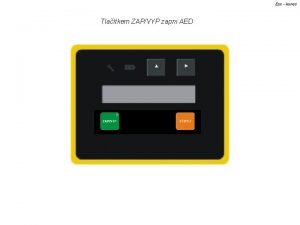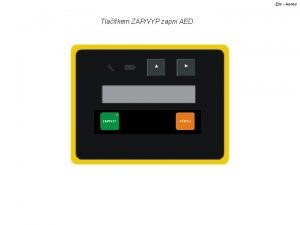Texas Education Data Standards TEDS ESC PEIMS Coordinator





























- Slides: 29

Texas Education Data Standards TEDS ESC PEIMS Coordinator Training Terri Hanson – Texas Education Agency April, 2012

Objectives �Understand the new Texas Education Data Standards. �Provide a training presentation for ESC Coordinators to use when training the Local Education Agencies (LEAs) in their respective regions. slide 2

What is TEDS? �TEDS describes the data reporting requirements and provides the descriptions of data elements and the code tables used to for any system that uses the Education Data Warehouse (EDW). �Current systems supported by the EDW: ▪ Dashboards ▪ PEIMS �Data will be submitted using XML which changes the format of the Data Standards. slide 3

Timeline � 2013 -14 School Year: The EDW will be available to specific school districts and ESC’s statewide for data transmission, local dashboard reports, and PEIMS data submission. �Districts will have up to two years, from 2013 -14 through 2014 -15 to convert their PEIMS file submission to XML format required for loading to the EDW, and test the results. � 2014 -2015 School Year: All districts will be required to submit their PEIMS collection through the EDW. �March 1, 2012: The final draft of TEDS published. �July 1, 2012: The addendum draft version of TEDS will be published with incremental updates published in April, May and June, 2012.

Where is TEDS? http: //www. texasstudentdatasystem. org/teds/ OR

TEDS Web Page slide 6

What is XML? �e. Xtensible Markup Language �Different format from fixed-length, 80 - column format used in the past. �Reporting data using a different tool; format. slide 7

Ed-Fi Core and Texas Core Extension Schemas TEDS contains the data elements included in the Ed-Fi Core and Texas Core Extension schemas. slide 8

What is the Ed-Fi Core Schema? � A third-party XML-based schema that will be used as a national standard and is aligned with the Common Education Data Standards (CEDS). � The Ed-Fi Core schema can be considered a library of XML complex types. Several of the data elements in this library are used to power the Dashboards. � When possible, Texas used the data elements in the Ed-Fi Core to report PEIMS data. The Texas Core Extension was created to include state specific data elements. � For more information on Ed-Fi, visit www. ed-fi. org. slide 9

TEDS Resources including PEIMS TEDS Reporting Requirements slide 10 TEDS PEIMS Reporting Requirements

Learning the Lingo � Categories: The grouping of similar data. “Category” will be used instead of “Record Group”. � Sub-Categories: Subsets of data within the categories. “Sub-Categories” will be used instead of “Record Type”. � Complex Types: The grouping of data elements that are reported for a sub-category. � Interchange Schemas: Interchange Schemas are a tool used for submitting smaller sets of data into the EDW. (Checking out complex types from the libraries, Ed-Fi Core and Texas Core Extensions. ) slide 11

Categories There are seven categories of data: slide 12 Education Organization Finance Staff Student Campus Course Section Assessment Cohort

Sub-Categories slide 13 Each Category will have several subcategories. For example, the Student Category has subcategories like Basic Information, Enrollment & Leaver, Course Completion.

Complex Type �Within a sub-category, there is one or more Complex Types. �For example, within the sub-category Basic Information, there is the complex type Student. Extension. �Section 8. 2 will only contain the complex types that are needed for PEIMS Reporting. slide 14

TEDS Section 2 – Data Submission Requirements Section 2 of TEDS includes: Complex Type data layouts which show the relationship of data submissions to category types. Business Rules Special Reporting Requirements Data Samples slide 15

Complex Type Example (Student. Extension) slide 16

Old v. New Legacy 100 Record slide 17

Old v. New Student. Extension slide 18

TEDS Section 3 – Data Elements � Section 3 of TEDS contains detailed descriptions of each of the Data Elements. � Element ID is the same as in the Legacy Standards. For example, FIRST-NAME is E 0703 � New elements needed for the Dashboard were assigned the next available ID number. For example, PROFILE-THUMBNAIL is E 1388. � Section 8. 3 will only contain those data elements that are needed for PEIMS reporting. slide 19

Data Element Example (FIRSTNAME) slide 20

Date Element Example (PROFILETHUMBNAIL) slide 21

TEDS Section 4 – Codes Tables � Section 4 of TEDS contains detailed descriptions of each of the Code Tables. � Code Table ID is the same as in the Legacy Standards. For example, GENERATION-CODE is C 012 � New code tables needed for the Dashboard were assigned Code Table id that begins with the letters DC. For example, ADDRESS-TYPE is DC 006. � Section 8. 4 will only contain those code tables that are needed for PEIMS reporting. slide 22

Code Table Example (GENERATION -CODE) slide 23

Code Table Example (ADDRESSTYPE) slide 24

TEDS Section 5 – Business Rules & Validations Overall organization of the Business Rules and Validations: Rules are grouped by data category and sub- category instead of record type. Rules in each sub-category are generally grouped by error level, then by basic logic pattern so that similar rules are together. slide 25

TEDS Section 5 – Business Rules & Validations For each edit rule in TEDS: Changed Edit Number to Former Edit Number Added a Rule Number. The Rule Number is a more versatile identifying system composed of the Data Category Code followed by a 4 character sequential number. Added a Business Meaning. The Business Meaning describes the purpose of the rule in natural language and refers to data elements by their XML Schema Name. Removed “Edit Not Applicable To: ESC/District/Campus/Charter” columns Added “Rule Applies To: ESC/District/Campus/Charter” columns slide 26

Business Rule Example slide 27

TEDS Section 5 – Business Rules & Validations Review Process �Each individual edit rule was reviewed with the goals to modify rules from an 80 column file format to the TSDS XML Schema, reduce the total number of rules, as well as simplify, clarify, and improve the consistency of rules. The results are: Numerous revised rules 9 new rules Over 200 edit rules removed because: ▪ the edit rule was only applicable to 80 column file format, ▪ the edit rule was no longer useful or relevant, or ▪ the edit rule was combined with another edit rule. slide 28

Feedback For questions or to report any issues, please contact us at: PEIMSCustomer. Support@tea. state. tx. us slide 29
 Texas education data standards
Texas education data standards Peims data standards
Peims data standards Texas education data standards
Texas education data standards Texas education data standards
Texas education data standards Tsds peims 2017 2018
Tsds peims 2017 2018 Teds ieee 1451
Teds ieee 1451 District data coordinator
District data coordinator Common education data standards
Common education data standards Esc router
Esc router Esc 18
Esc 18 Windows privilege escalation
Windows privilege escalation Esc la neuveville vacances
Esc la neuveville vacances Esc
Esc Region 1 esc
Region 1 esc Transx esc
Transx esc Press esc to exit
Press esc to exit Esc of lorain county
Esc of lorain county Ecole de commerce la neuveville
Ecole de commerce la neuveville Region one esc
Region one esc North point esc
North point esc Projet esc
Projet esc Esc of morris county
Esc of morris county Score esc 2019
Score esc 2019 Press esc to exit
Press esc to exit Trumbull county esc
Trumbull county esc Esc region 1
Esc region 1 Esc law
Esc law What is esc
What is esc Progression pédagogique esc
Progression pédagogique esc Esc 101
Esc 101

